
Fall Foliage Landscaping: Mastering the Art
Published: 05/10/2024 | Updated: 03/10/2024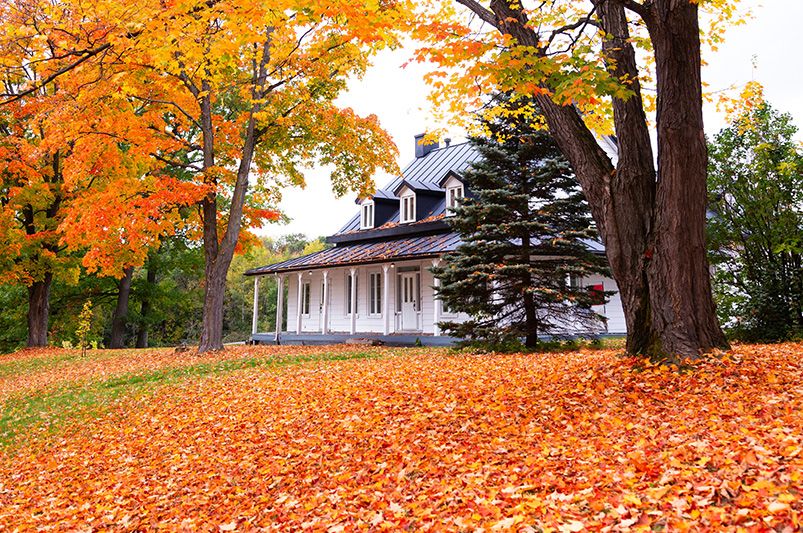
Key Highlights
- Designing a garden for peak fall color involves strategically choosing plants known for vibrant leaf transformations or late-season blooms.
- Understanding the role of sunlight, soil conditions, and your local climate is crucial for successful plant selection and placement.
- Creating a multi-layered landscape with trees, shrubs, and flowering plants ensures visual depth and interest throughout the fall season.
- Proper soil preparation, watering, and fertilization are essential for establishing new plantings and maximizing color intensity.
- Don't be afraid to experiment with different textures and hues, incorporating elements like ornamental grasses and late-blooming perennials.
Introduction
As days get shorter and nights cooler, nature shows us a beautiful display of fall color. This bright change happens mainly because leaves produce less chlorophyll. As chlorophyll fades, it allows the stunning reds, oranges, and yellows to shine through. Knowing how this process works can help us choose and arrange plants. This way, we can create a gorgeous fall foliage scene in our yards.


Understanding the Basics of Fall Foliage and Landscape Design
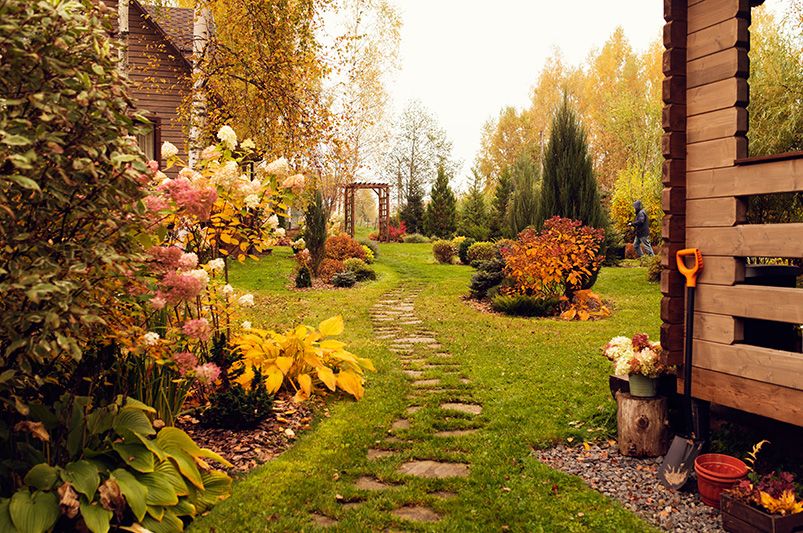
The secret to a stunning fall landscape is choosing plants known for their beautiful colors. You should think about adding trees like maples, oaks, and dogwoods. These trees are famous for their bright leaf colors. Also, include shrubs such as viburnum, oakleaf hydrangea, and American beautyberry to add extra texture and beauty.
But great fall landscaping is not just about bright colors. You need to look closely at your space. Check for areas that get full sun, partial shade, and full shade. Knowing the type of soil, how it drains, and what the local weather is like will help you pick the right plants. This is important to make sure your plants grow well in their spots.
The Role of Color in Fall Landscaping
As summer ends and chlorophyll production decreases, fall's beauty begins. Carotenoids bring yellows and oranges, while anthocyanins add reds and purples. Choosing plants with different colors can help you create a beautiful mix.
Think about how these pigments work together when picking your plants. A Japanese Maple has bright red leaves that really stand out next to the golden yellow ginkgo tree. Adding plants with burgundy, purple, and bronze leaves brings more style to your garden.
Also, consider late-blooming perennials, which can keep your fall color display going longer. Plants like asters, sedums, and ornamental grasses not only look nice but also add texture, making your garden even more interesting during the fall.
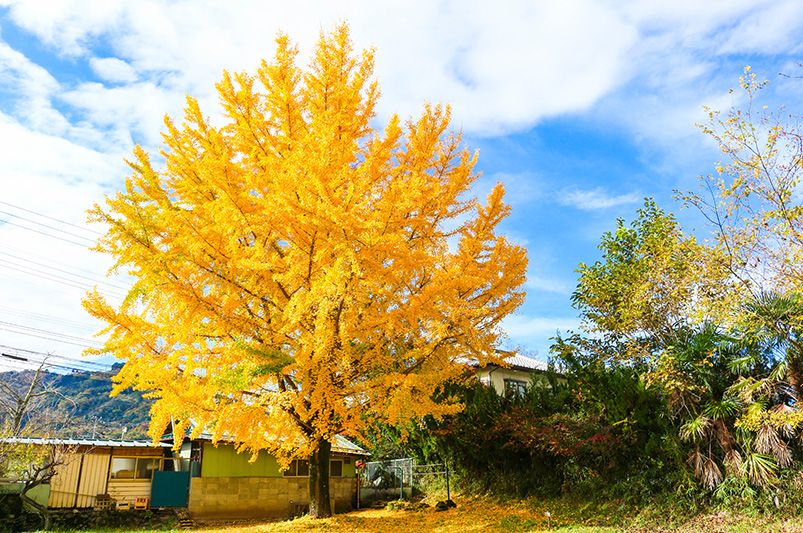
Choosing the Right Plant Varieties for Vivid Autumn Colors
When picking trees for your fall garden, think about popular options like the Japanese Maple. It is known for its bright red colors. Another choice is the oakleaf hydrangea, which has leaves that change to deep reds and oranges. Trees like the American sycamore and sugar maple offer beautiful yellows and oranges. Dogwoods also give a wonderful display of purples and reds.
Adding shrubs can make your garden more interesting with different textures and colors. The American beautyberry is popular because it has lots of bright purple berries. The Virginia sweetspire has leaves that turn into bright reds and oranges.
Don’t forget about perennials too! Look for late bloomers like asters, sedums, and goldenrods. They help keep the garden colorful as the season changes. These plants stand out against the background of changing foliage.
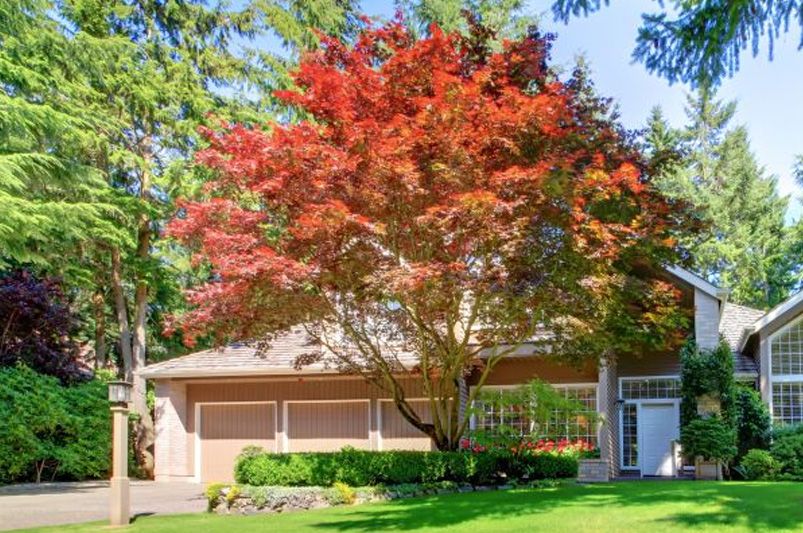
Planning Your Fall Foliage Landscape
A good fall landscape looks amazing. Start by making a simple sketch of your yard. Mark where there are buildings, paths, and special spots. Think about how big and what shape the plants will be when they grow. This helps you space them out properly and avoid crowding.
Then, look at how much light each part of your yard gets. Is it mostly full sun, partial shade, or full shade? Knowing the light conditions helps you pick the right plants that will do well in those spots.
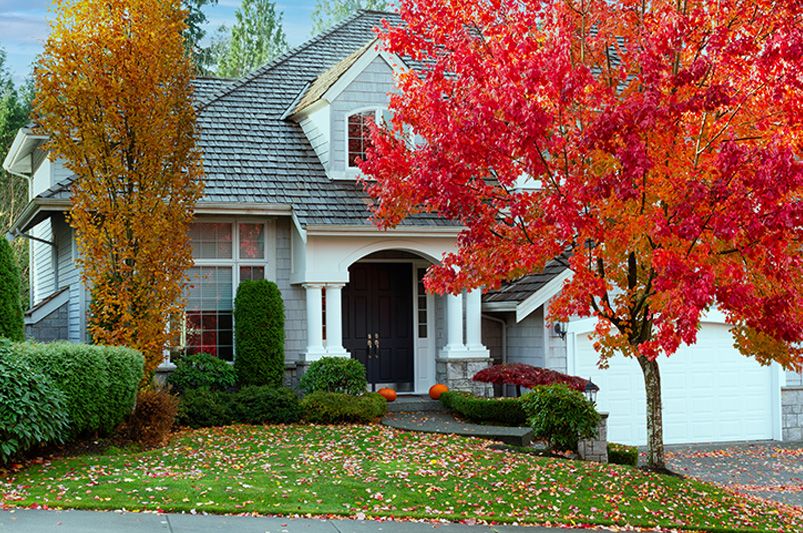
Assessing Your Space for Optimal Plant Placement
One of the first things to do when designing a beautiful fall foliage garden is to check how much sunlight your space gets. You should identify places that have full sun, meaning six or more hours of direct sunlight. Then, check for partial shade, which gets four to six hours, and finally, full shade, which gets less than four hours.
After you know your light conditions, you can choose plants that fit each area. Plants that love the sun, like many maple types, will show bright colors when planted in areas with full sun.
On the other hand, many lovely fall foliage plants grow well in partial shade. Think about shade-loving plants like oakleaf hydrangeas, fothergilla, and some types of witch hazel. These can grow in darker spots but still offer bright colors.
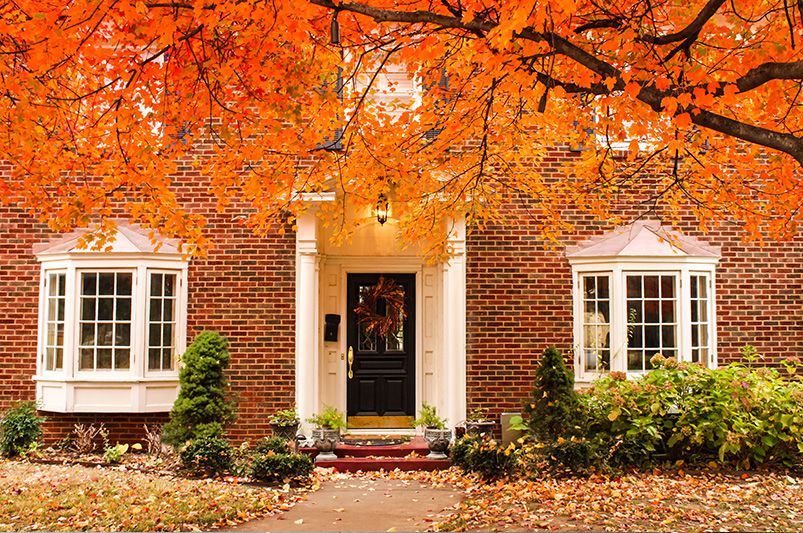
Incorporating Trees and Shrubs for Seasonal Impact
The weather has a big impact on fall foliage. Cool nights and sunny days help leaves produce more sugar. This results in brighter red and purple colors. You should choose trees and shrubs that respond to temperature changes.
Maple trees are great for showing off bright colors like scarlet, crimson, and orange when the temperature is just right. For a longer warm season, you can try trees like the Katsura. They change color later and show beautiful shades of apricot, yellow, and orange.
Shrubs are also important for keeping fall interesting. Witch hazels bloom later and have bright leaves, connecting autumn to winter. Viburnums have colorful berries that attract birds and provide food during the winter.
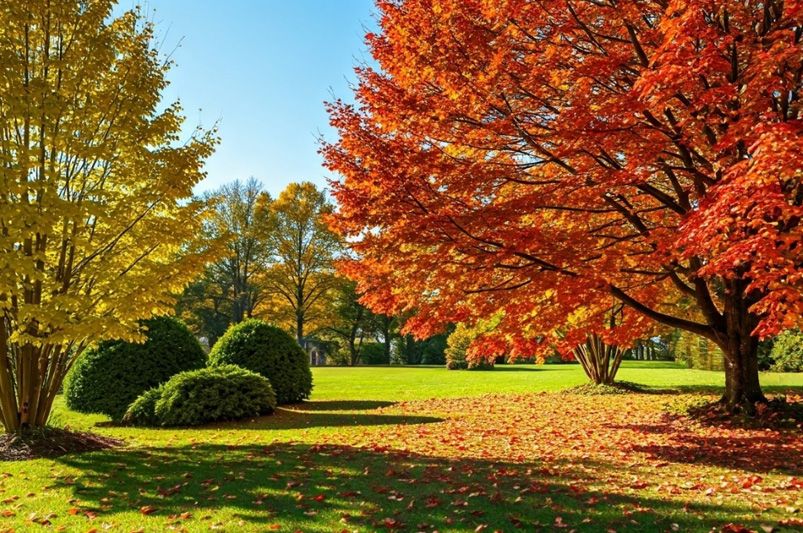
Essential Elements of Fall Foliage Landscaping
Creating a beautiful fall foliage display is more than just choosing plants. It's about making an enjoyable experience. Use design tips that focus on key areas, add layers, and bring out the feel of autumn.
Think about adding things that match the charm of fall. Stone paths, wooden benches, and items in warm colors can improve the space. They make it inviting and encourage you to stay among the colorful foliage.
Highlighting Focal Points with Fall Colors
As you plan your fall color display, think about making focal points that catch the eye. A Japanese maple with its bright red leaves can be a stunning centerpiece. A group of oakleaf hydrangeas with their colorful leaves can create a striking backdrop.
Add elements that make the experience richer. Plant fragrant witch hazels by walkways so their spicy scent can be enjoyed on cool autumn evenings. Garden centers have many autumn-blooming flowers, like chrysanthemums and asters. These flowers add bright colors and keep the season beautiful longer.
Don't forget about the effect of hardscaping materials. Use natural stone, warm pavers, or decorative gravel to outline pathways and create seating areas. These materials highlight the beauty of your fall foliage. The mix of color and texture makes a truly amazing landscape.
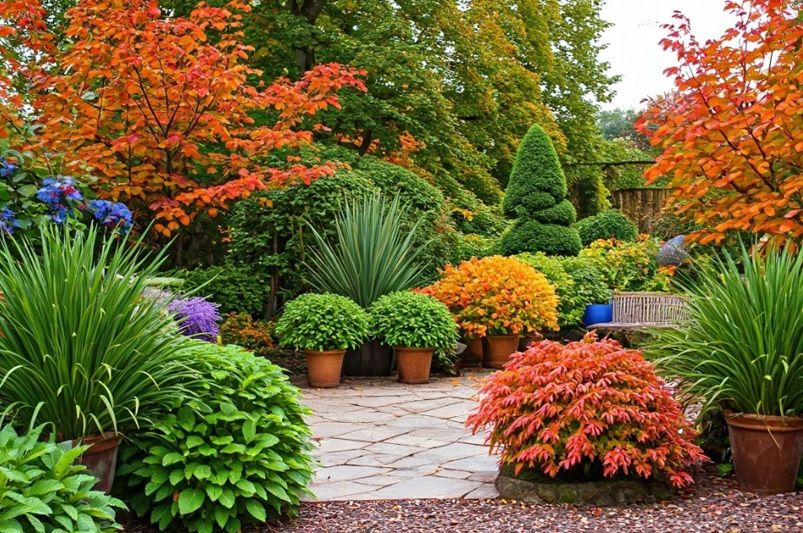
Layering with Perennials and Annuals for Depth
To make your landscape more interesting, try to layer it with a mix of perennials, annuals, and some late-summer edibles.
Perennials:
- Fall-blooming anemones have pretty white and pink flowers. They look great against the changing foliage.
- Ornamental grasses, such as feather reed grass and purple moor grass, give your garden a nice shape. Their plumes sway gently in the autumn breeze.
- Sedums bloom late in summer and have juicy leaves. They bring color and attract pollinators.
Annuals:
- Pansies and violas, when planted in late summer or early fall, brighten up borders and containers, keeping the colors alive.
- Celosia, with its fun feathery plumes in warm autumn colors, adds charm and visual appeal.
Maintenance Tips for a Thriving Autumn Garden
While fall brings cooler weather that feels nice after summer, keeping your autumn garden pretty takes some care. Like in spring, you should keep an eye on soil moisture. Water your plants more if they need it and change how you use fertilizer to help them grow strong.
As the days get shorter, your plants will need different things. Take off wilted flowers to help your plants bloom more. You can also separate crowded perennials. This helps them stay strong for next year. With a little effort, your autumn garden can bring you beauty and good results.
Preparing the Soil for Autumn Planting
One key part of helping plants grow well and have bright fall leaves is preparing the soil properly. Planting in autumn lets roots take hold during the cooler months. This sets them up for strong growth in spring.
Start by mixing the soil with organic matter like compost or old manure. This helps with drainage, keeps water in, and adds important nutrients for good growth. When you plant trees and shrubs, dig a hole that is twice as wide as the root ball. This gives the roots room to grow.
Pay attention to soil moisture, especially in the first year after planting. Water the plants deeply and often so that the whole root area gets enough moisture. Adding a layer of mulch helps keep the soil moist, stabilizes temperature changes, and stops weeds from growing.
Watering and Fertilizing for Fall Growth
Consistent watering is very important, especially when plants are new. Water them deeply but less often. This helps the roots to grow strong. Look for signs of drought stress, like wilting leaves or drooping branches, and change how much you water based on that.
If you live in places that have severe summer drought or tough winter conditions, you should think about protecting new trees and shrubs. Wrapping the trunk with burlap can help stop winter dryness. Also, putting a thick layer of mulch at the base will keep the roots safe from extreme temperatures.
Plants need different amounts of fertilizer. But in general, it is better to not fertilize new plants in the fall. Late growth can be more likely to get hurt by frost. It is best to wait until spring to apply fertilizer when the plants are growing well.
Conclusion
As the bright colors of fall foliage fill your yard, learning about design turns into an exciting adventure. To make a beautiful autumn garden, you need to understand how colors work together and choose the right plants. Planning and taking care of your garden help it grow well during this season. You can improve your outdoor space by using layers of perennials and adding vibrant colors in specific areas. By using these suggestions, you can create a lovely autumn retreat that can make your home more valuable. Don’t forget to share your amazing fall landscape on social media to encourage others to enjoy the beauty of autumn.
Frequently Asked Questions
What are the best trees for fall color in the United States?
New England is known for its colorful fall scenes. The bright red leaves of the acer rubrum, which is called the red maple, are a major highlight. Japanese maples, with their many types, also stand out. Oaks and hickory add to the mix. Lastly, the lovely oakleaf hydrangea brings even more texture and color to the autumn view.
How can I ensure my fall plants survive the winter?
Protecting fall plants from cold winter weather is important for them to survive. Gardeners can keep their plants safe from frost by using mulch around the base. This creates a layer that guards against changing temperatures. Applying a thick layer of ground cover also helps to keep the roots warm. This way, the plants can stay healthy during the dormant season.
When is the best time to plant for fall foliage?
Early fall is often seen as the best time to plant for fall foliage. It's best to start about 6 weeks before the first frost. This gives the roots time to grow before the ground freezes, when the soil is still warm from summer. No matter if your spot gets full sun, partial sun, or some shade, planting during this warm period is important for success.
Can fall landscaping improve home value?
Beautiful landscaping can greatly boost the value of your home. Adding plants with stunning autumn colors is a great way to do that! The lovely view of bright foliage and well-kept landscaping adds to your home's charm and worth.
Need Assistance for a Complete Landscape Makeover?
Shrubhub’s landscape design packages can significantly transform the lives of homeowners by delivering customized, professional landscaping plans tailored to their unique space and personal style. With the ease of online collaboration, you are guided step-by-step through a design process that fundamentally reshapes your outdoor environment. The result is an aesthetically pleasing and functional outdoor living area that maximizes the potential of your property.
Sign up now for free and get a whopping 70% discount on your landscape design!


